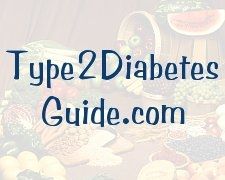How to Boost Your Body's Insulin Production
What Is Insulin?
Insulin is a chemical-signaling hormone that gets secreted by the pancreas - specifically, the pancreas' islet cells. In addition to making insulin, the pancreas makes digestive enzymes - so the pancreas is an organ designed to enable us to create the means of digesting and absorbing the nutrients in our foods to give our cell tissues energy.
Insulin is secreted by the pancreas when the body senses an increase in blood sugar (glucose) after we've just eaten or taken a drink of something with glucose in it. Most cells of the body's tissues have insulin receptors on them, and these bind the insulin released into the bloodstream. circulation. Once a cell gets insulin attached to its surface, it activates other receptors which absorb the glucose contained in the blood stream and bring it inside of the cell.
Glucose is the form of sugar that all starchy foods have, where the nutrients are transformed within body after digestion. Glucose gives us energy. It's the first type of biochemical energy the body always looks for to use as energy, and it is the type of energy used by the brain.
Blood glucose levels get strictly regulated by insulin - except in diabetics. Without any insulin, you can gobble up food like a glutton yet literally be "starving" because the body has numerous cells that can't absorb food's nutrients without the presence of insulin. People with type 2 diabetes aren't starving to death - however, they are suffering complications from malnutrition because of the absence of insulin in their cell receptors and/or in their bloodstream. Not only can this cause a serious lack of energy (if not treated), people may already be suffering from the complications of being overweight. Our bodies store most of the glucose that it doesn't burn - and when we store calories instead of burning them, we put on weight.
Treating Diabetes With Insulin
Type 2 diabetics are commonly treated with commercially produced insulin, which gets injected (or sometimes taken orally) into the body. Commercial insulin was first derived from the pancreatic islets of animals slaughtered for food - cow and pig insulin turned out to work quite well and was commercially purified, and then sold in bottles. However, there were sometimes complications with some diabetics having allergic reactions to these foreign body proteins. When the genetic technology was available in the 1980s to make synthetic human insulin, it became the commercial insulin of choice, though the other insulin is still sold and typically still works very well.
This is not the only part of a diabetes treatment program, however. People with type 2 diabetes are often put on a weight loss regimen which includes regular exercise and strict control of the carbohydrates in their diets, aiming to keep their blood sugar levels fairly stable throughout the day. Some diabetics never have to take insulin. It's preferable to treat type 2 diabetes with diet and exercise under the guidance of a doctor. Exercise and a diet low in sugars, fat, and salt and high in fiber not only works to control blood glucose levels, it can also help to boost insulin production or cellular uptake as well.
What Causes Diabetes?
Insulin Resistance
Signs of Diabetes
Hypoglycemia
Hyperglycemia
Glycemic Index
Diabetic Recipes
Feline Diabetes
Diabetes Diet Sheet
How to Control Diabetes Without Medication
What Foods Have a Low Glycemic Index?
Conversion Chart for Blood Sugar Levels




